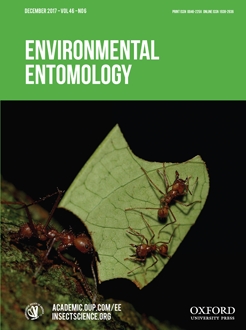The pecan weevil, Curculio caryae (Horn) (Coleoptera: Curculionidae), is a key pest of pecans Carya illinoinensis ([Wangenh.] K. Koch) (Fagales: Juglandaceae). Control recommendations rely on broad spectrum chemical insecticides. Due to regulatory and environmental concerns, effective alternatives for C. caryae control must be sought for pecan production in conventional and organic systems. We explored the use of microbial biopesticides for control of C. caryae in Georgia pecan orchards. Three experiments were conducted. The first investigated an integrated microbial control approach in an organic system at two locations. Three microbial agents, Grandevo (based on byproducts of the bacterium Chromobacterium subtsugae Martin, Gundersen-Rindal, Blackburn & Buyer), the entomopathogenic nematode Steinernema carpocapsae (Weiser), and entomopathogenic fungus Beauveria bassiana (Balsamo) Vuillemin, were applied to each treatment plot (0.6 ha) at different times during the season. A second experiment compared the effects of S. carpocapsae and B. bassiana applied as single treatments relative to application of both agents (at different times); survival of C. caryae was assessed approximately 11 mo after larvae were added to pots sunk in an organic pecan orchard. In a conventional orchard (with 1.0 ha plots), the third experiment compared Grandevo applications to a commonly used regime of chemical insecticides (carbaryl alternated with a pyrethroid). All experiments were repeated in consecutive years. The combined pest management tactic (experiment 1) reduced C. caryae infestation relative to non-treated control plots in both locations in 2014 and one of the two locations in 2015 (the other location had less than 1% infestation). In experiment 2, no differences among combined microbial treatments, single-applied microbial treatments or different numbers of application were observed, yet all microbial treatments reduced C. caryae survival relative to the control. In the third experiment, both Grandevo and standard chemical insecticide applications resulted in lower weevil infestation than the control (both years) and there was no difference between the insecticide treatments in 2014 although the chemical insecticide regime had slightly lower infestation in 2015. These results provide evidence that microbial biopesticides can substantially reduce pecan weevil infestations in organic and nonorganic systems.
How to translate text using browser tools
23 September 2017
Control of Pecan Weevil with Microbial Biopesticides
David I. Shapiro-Ilan,
Ted E. Cottrell,
Clive Bock,
Kim Mai,
Debbie Boykin,
Lenny Wells,
William G. Hudson,
Russell F. Mizell
ACCESS THE FULL ARTICLE
It is not available for individual sale.
This article is only available to subscribers.
It is not available for individual sale.
It is not available for individual sale.

Environmental Entomology
Vol. 46 • No. 6
December 2017
Vol. 46 • No. 6
December 2017
Beauveria bassiana
biological control
Chromobacterium subtsugae
Curculio caryae
organic




